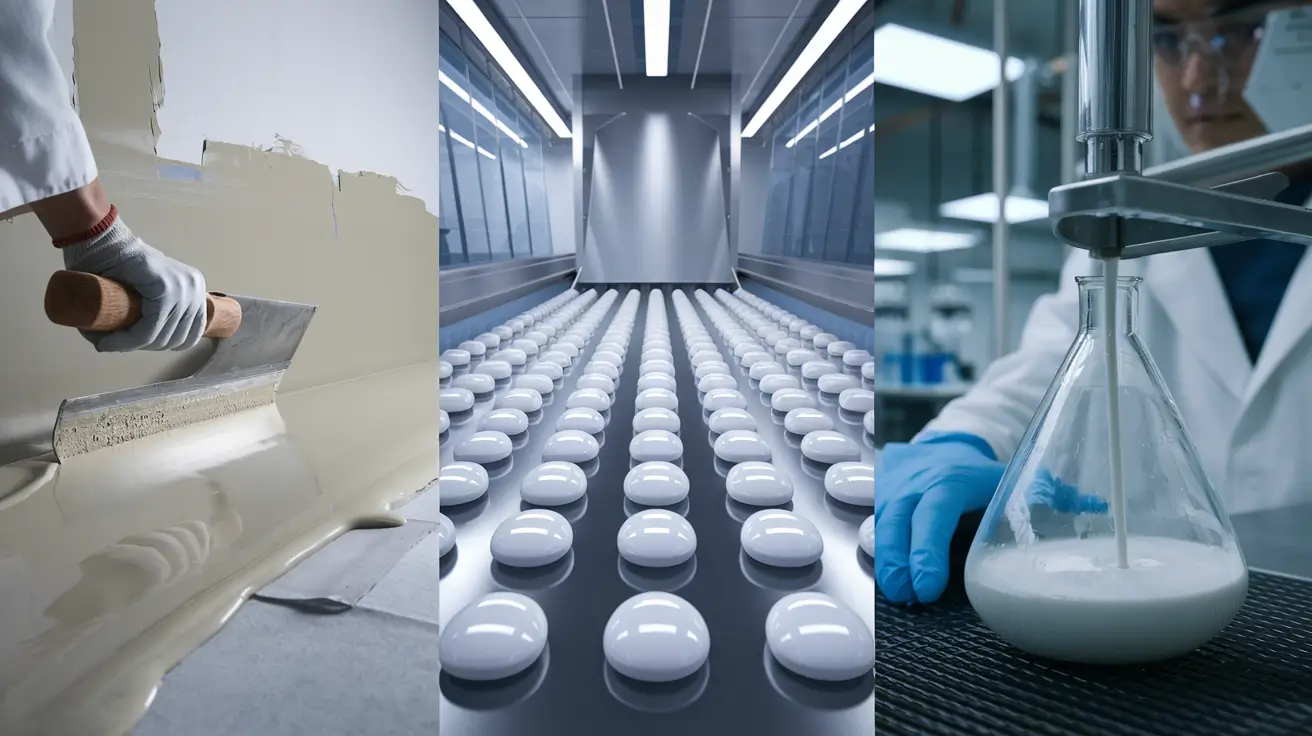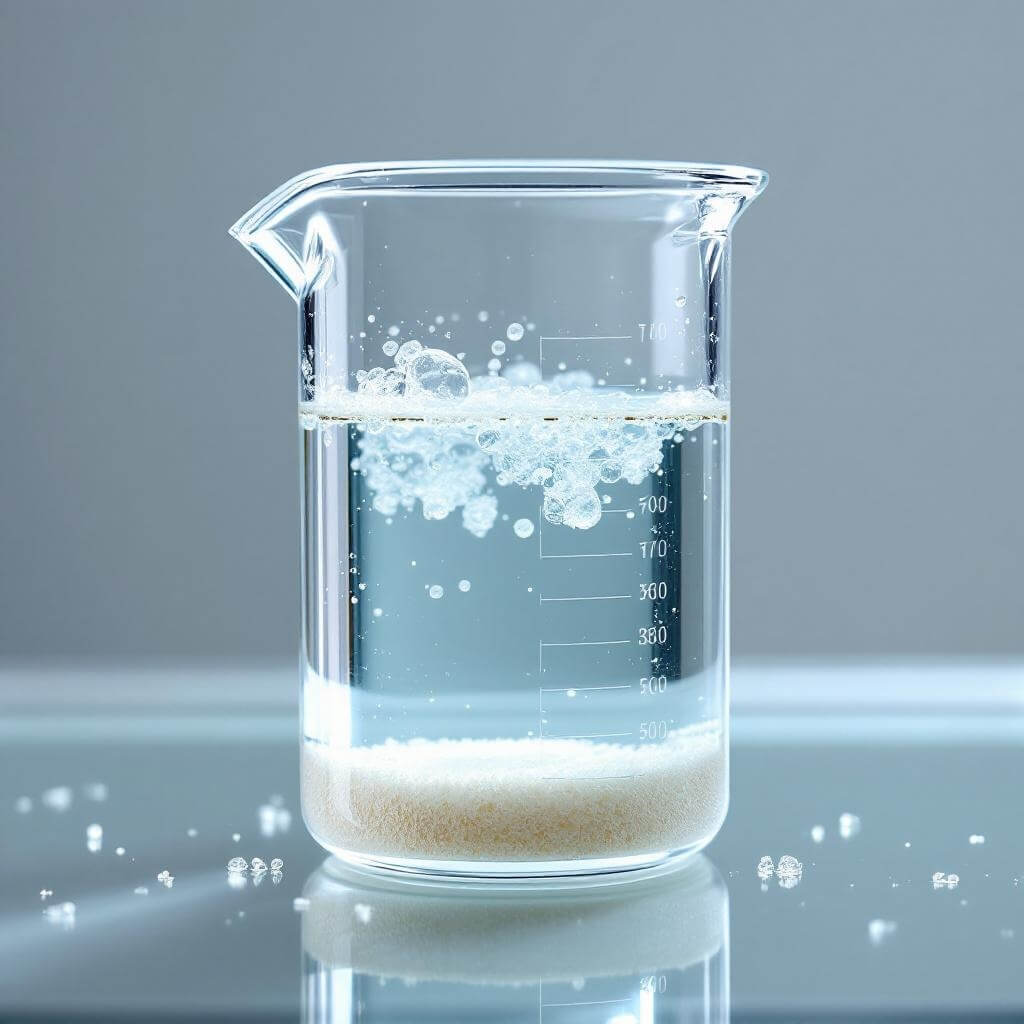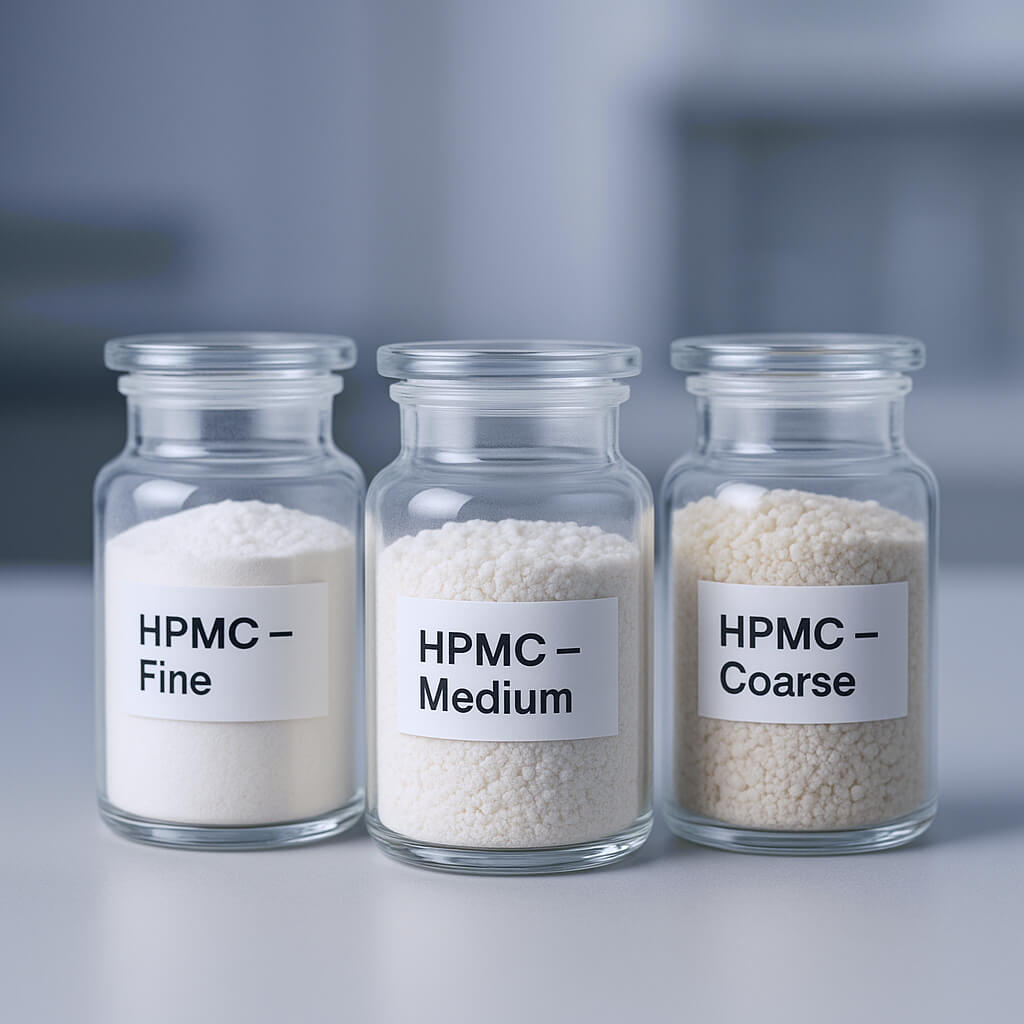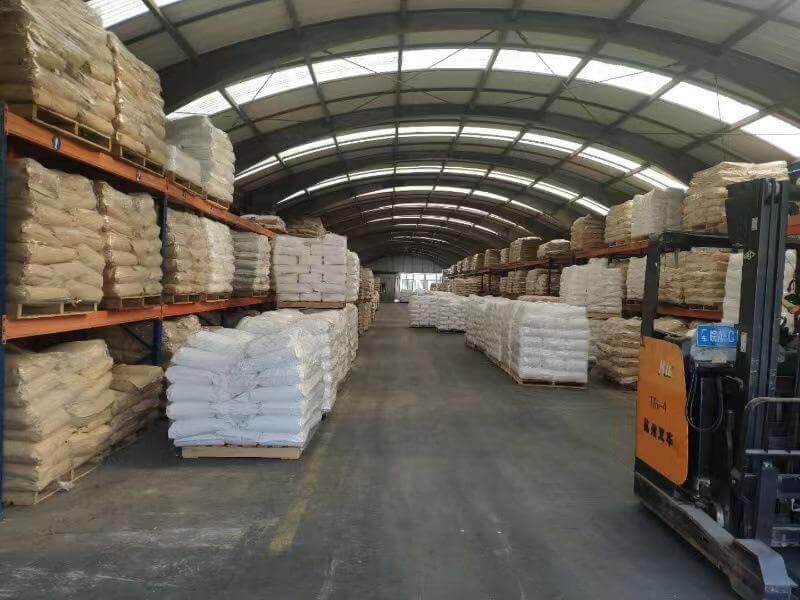Hydroxypropyl methylcellulose (HPMC) is a versatile polymer. Its performance depends on solubility. Understanding pH effects on HPMC is vital for product development. Poor dissolution from improper pH impacts quality and stability. This causes production delays and waste. Knowing HPMC solubility across pH levels ensures product integrity and efficiency. This article explains HPMC solubility, influencing factors, measurement methods, and practical applications. It helps you optimize its use.

1. What is HPMC and how does it dissolve?
HPMC, or Hydroxypropyl methylcellulose, is a cellulose ether derived from natural cellulose. Manufacturers chemically modify it by adding hydroxypropyl and methoxy groups, which alter its properties and make it water-soluble.
When HPMC dissolves, it first swells as water molecules surround and separate the polymer chains. These chains then disperse evenly throughout the liquid. Here’s why it matters… This process forms a clear, viscous solution. The dissolution rate depends on factors like temperature, particle size, and the specific HPMC grade.
| Property | Description |
|---|---|
| Chemical Structure | Cellulose backbone with hydroxypropyl and methoxy groups |
| Solubility | Soluble in cold water |
| Appearance | White to off-white powder |
| Function | Thickener, binder, film former, suspending agent |
2. How does pH impact HPMC solubility?
HPMC is a non-ionic polymer, meaning its solubility does not directly depend on pH. Unlike ionic polymers, HPMC lacks charged groups that would react with acids or bases, allowing it to remain stable across a wide pH range.
In acidic conditions, HPMC maintains solubility and does not easily precipitate or degrade, making it suitable for low pH applications. Similarly, in alkaline environments, HPMC remains soluble due to its non-ionic nature. But here’s the thing… Extreme pH levels can still affect performance. Very strong acids or bases might cause some hydrolysis, breaking down polymer chains and leading to a slight reduction in viscosity over time. However, for most practical uses, HPMC exhibits good pH stability.
| pH Range | HPMC Behavior | Typical Applications |
|---|---|---|
| 1-3 (Acidic) | Stable, maintains solubility | Gastric-resistant coatings, acidic beverages |
| 4-9 (Neutral to Mildly Alkaline) | Highly soluble, stable viscosity | Most pharmaceutical tablets, food products |
| 10-12 (Alkaline) | Stable, slight long-term viscosity loss possible | Detergents, some industrial formulations |
3. What methods measure HPMC solubility at different pH levels?
Measuring HPMC solubility and its behavior at various pH levels is important. Turbidimetric titration is a common technique that measures solution cloudiness. As HPMC precipitates, the solution becomes cloudy, indicating reduced solubility. This method helps determine the pH at which HPMC begins to come out of solution.
Viscosity measurements are also very useful. HPMC forms viscous solutions when dissolved, so a decrease in viscosity at a certain pH suggests reduced solubility or degradation. Light scattering techniques provide information about particle size and aggregation, helping understand HPMC behavior in different pH environments. Dissolution testing is crucial for finished products, checking how quickly HPMC-containing formulations release active ingredients. Now, you might be wondering… How do these methods apply in real-world settings? They help formulators predict and control HPMC performance, ensuring product stability and efficacy. These tests are vital for quality control.
| Method | Principle | Application |
|---|---|---|
| Turbidimetric Titration | Measures turbidity changes | Determines precipitation pH |
| Viscosity Measurement | Measures flow resistance | Assesses solution stability, degradation |
| Light Scattering | Analyzes particle size | Detects aggregation, dissolution state |
| Dissolution Testing | Measures drug release | Evaluates product performance |
4. What are typical pH ranges for HPMC applications?
HPMC finds wide use across many industries due to its pH stability, making it suitable for diverse applications. In pharmaceuticals, HPMC acts as a binder, disintegrant, and film-former in tablets and capsules. These products often need to withstand varying pH conditions in the body. For example, enteric coatings protect drugs from stomach acid, with HPMC grades chosen for their ability to remain intact at low pH and then dissolve in the higher pH of the intestines.
Food products also use HPMC as a thickener, stabilizer, and emulsifier in items like sauces, dressings, and baked goods. The pH of these foods varies widely, and HPMC performs well in both acidic and neutral food systems. Building materials, such as tile adhesives and renders, utilize HPMC to improve workability and water retention, facing different environmental pH levels. This is important because… HPMC helps maintain their structural integrity. Personal care items, including shampoos and lotions, contain HPMC for thickening and suspending properties, ensuring product stability and texture across specific pH requirements for skin compatibility.
| Application Area | Typical pH Range | HPMC Function |
|---|---|---|
| Pharmaceuticals | 1.2 – 7.4 | Binder, film former, controlled release |
| Food Products | 3.0 – 8.0 | Thickener, stabilizer, emulsifier |
| Building Materials | 7.0 – 12.0 | Water retention, workability |
| Personal Care | 4.5 – 7.0 | Thickener, suspending agent |
5. How do temperature and concentration affect HPMC solubility with pH?
Temperature significantly influences HPMC solubility. HPMC is unique because it exhibits inverse thermal gelation, meaning it is more soluble in cold water. As temperature rises, its solubility decreases, and at a certain temperature, HPMC solutions can form a gel. This gelation temperature is important for many applications and can be affected by other substances. Higher temperatures can also accelerate any potential hydrolysis at extreme pH levels.
Concentration also plays a role. Higher HPMC concentrations lead to higher solution viscosity, affecting how quickly HPMC dissolves and impacting solution clarity. At very high concentrations, HPMC may not fully dissolve, forming a dispersion instead. The interplay between pH, temperature, and concentration is complex. Want to know the secret? Careful control of all three factors is needed to ensure optimal HPMC performance. For example, a high concentration HPMC solution might gel at a lower temperature even within its stable pH range. Understanding these interactions helps formulators avoid issues and create stable, effective products.
| Factor | Effect on HPMC Solubility | Interaction with pH |
|---|---|---|
| Temperature | Inverse solubility (gels at higher temps) | Higher temps can accelerate pH-induced degradation |
| Concentration | Higher concentrations increase viscosity | Can influence gelation temperature at given pH |
| pH | Stable across wide range | Extreme pH can cause hydrolysis over time |
6. What other factors influence HPMC solubility?
Beyond pH, temperature, and concentration, several other factors influence HPMC solubility. Molecular weight is a key determinant; higher molecular weight HPMC grades typically have higher viscosity and dissolve more slowly because longer polymer chains take more time to hydrate and disentangle. The degree of substitution (DS) also matters, referring to the average number of methoxy and hydroxypropyl groups per anhydroglucose unit. Different DS values affect the polymer’s hydrophilicity, impacting its interaction with water, and a higher degree of substitution can sometimes reduce water solubility or alter the gelation temperature.
The presence of salts or other excipients can significantly impact HPMC solubility. Salts can have a salting-out effect, reducing HPMC solubility. Other excipients, like sugars or polyols, can also affect water activity, indirectly influencing HPMC dissolution. Particle size is another important factor; finer HPMC powders dissolve faster due to a larger surface area exposed to water, allowing quicker hydration. The bottom line? All these factors interact, collectively determining HPMC performance. Understanding each one helps in precise formulation to achieve desired product characteristics.
| Factor | Impact on Solubility | Notes |
|---|---|---|
| Molecular Weight | Higher MW = slower dissolution | Affects viscosity and hydration rate |
| Degree of Substitution | Affects hydrophilicity | Influences water interaction and gelation |
| Salts/Excipients | Can reduce solubility | Salting-out effect, water activity changes |
| Particle Size | Finer particles = faster dissolution | Larger surface area for hydration |
7. How can you optimize HPMC performance across pH variations?
Optimizing HPMC performance in varying pH environments requires careful consideration. Selecting the right HPMC grade is paramount. Different grades have varying molecular weights and degrees of substitution, influencing their pH stability and dissolution profiles. For instance, a higher molecular weight HPMC might be better for sustained release even in changing pH conditions, while a lower molecular weight HPMC might suit quick dissolution applications. You must match the HPMC grade to your specific product needs.
Formulation adjustments are also critical. You can add buffering agents to control the local pH, helping maintain HPMC solubility. Other excipients can also influence HPMC behavior; for example, some polymers can form complexes with HPMC, changing its dissolution characteristics. Process controls are also vital. Mixing speed, hydration time, and temperature during manufacturing affect HPMC dispersion. Proper processing ensures complete dissolution and prevents lump formation. Here’s the deal… Thorough testing and validation are always necessary to confirm HPMC performs as expected, ensuring stability and efficacy over the product’s shelf life. This includes testing at various pH levels and under different storage conditions.
| Optimization Strategy | Description | Benefit |
|---|---|---|
| Grade Selection | Match HPMC grade to application needs | Ensures proper pH stability and dissolution |
| Buffering Agents | Control local pH of the formulation | Maintains HPMC solubility and prevents precipitation |
| Excipient Choice | Select compatible excipients | Avoids adverse interactions, supports HPMC function |
| Process Control | Optimize mixing, hydration, temperature | Ensures uniform dispersion and dissolution |
| Testing & Validation | Comprehensive pH and stability tests | Confirms HPMC performance in final product |
8. What are common challenges when using HPMC in varied pH environments?
Despite its stability, using HPMC in varied pH environments presents challenges. Gelling issues can arise, especially with temperature changes. As mentioned, HPMC forms gels at higher temperatures. If a product moves from a cool to a warm environment, unexpected gelling can occur, affecting product consistency and consumer acceptance. Precipitation is another concern. While HPMC is non-ionic, extreme pH can still cause issues. For example, very high salt concentrations in an acidic environment might induce precipitation, reducing the HPMC’s effectiveness and affecting product appearance.
Loss of viscosity is a common problem if HPMC degrades over time, accelerated by extreme pH or high temperatures. This leads to a product that is too thin and might not perform its intended function. Batch consistency problems also occur, as variations in raw material quality or processing conditions affect HPMC performance, especially in pH-sensitive formulations. Let me explain… These challenges require careful formulation design and strict quality control to ensure consistent product quality and reliable performance. Understanding these potential pitfalls helps formulators proactively address them, leading to more robust products.
| Challenge | Description | Impact |
|---|---|---|
| Gelling Issues | Unexpected gel formation at higher temperatures | Affects product consistency, consumer acceptance |
| Precipitation | HPMC comes out of solution | Reduces effectiveness, affects appearance |
| Loss of Viscosity | Degradation of HPMC over time | Product becomes too thin, loses function |
| Batch Inconsistency | Variations in performance between batches | Affects product reliability, quality control |
9. How does HPMC compare to other polymers in pH sensitivity?
HPMC stands out among polymers due to its low pH sensitivity. Many other common polymers are highly sensitive to pH changes. For example, carboxymethyl cellulose (CMC) is an anionic polymer whose solubility and viscosity depend heavily on pH. CMC dissolves well in neutral to alkaline conditions but can precipitate in acidic environments, limiting its use in low pH applications. Polyvinylpyrrolidone (PVP) is another common polymer, generally soluble across a wide pH range, but its viscosity can be affected by ionic strength and certain salts. Natural gums, like xanthan gum or guar gum, also show pH sensitivity; xanthan gum maintains viscosity over a broad pH range, but guar gum can lose viscosity at very low pH. Here’s why it matters… HPMC offers a distinct advantage. Its non-ionic nature provides consistent performance across a broad pH spectrum, making it a preferred choice for many formulations, especially where pH variations are expected (e.g., pharmaceutical and food products). This stability simplifies formulation development and reduces the risk of product failure.
| Polymer | pH Sensitivity | Typical Behavior |
|---|---|---|
| HPMC | Low | Stable solubility and viscosity across wide pH range |
| CMC | High | Precipitates in acidic conditions, soluble in neutral/alkaline |
| PVP | Moderate | Viscosity affected by ionic strength, some salts |
| Xanthan Gum | Low | Maintains viscosity over broad pH range |
| Guar Gum | Moderate | Loses viscosity at very low pH |
10. What regulatory considerations apply to HPMC use in pH-sensitive products?
Regulatory bodies oversee HPMC use in various products, especially for pH-sensitive applications. The U.S. Food and Drug Administration (FDA) regulates HPMC, generally recognizing it as safe (GRAS) for many food uses. For pharmaceuticals, HPMC must meet specific pharmacopeial standards, including the United States Pharmacopeia (USP) and the European Pharmacopoeia (Ph. Eur.), which define purity, quality, and performance criteria. These ensure HPMC is suitable for its intended use, including its behavior in different pH environments. Manufacturers must adhere to Good Manufacturing Practices (GMP) to ensure consistent quality and safety.
Food safety regulations also apply to HPMC, varying by country and typically covering maximum usage levels and labeling requirements. Industry standards, beyond official regulations, also guide HPMC use, often providing best practices to ensure product stability and efficacy. The best part? Adhering to these regulations and standards is not just about compliance; it’s about ensuring product safety, effectiveness, and building consumer trust. For pH-sensitive products, this means demonstrating HPMC performs reliably under all expected conditions, including varying pH levels. Proper documentation and testing are vital to show compliance with all relevant guidelines.
| Regulatory Body/Standard | Scope | Key Considerations for HPMC |
|---|---|---|
| FDA (U.S.) | Food, Pharmaceuticals | GRAS status, USP standards, GMP |
| European Pharmacopoeia | Pharmaceuticals (Europe) | Quality, purity, performance standards |
| Food Safety Regulations | Global Food Products | Usage limits, labeling, safety |
| Industry Standards | Various Industries | Best practices, performance guidelines |
Conclusion
Understanding HPMC solubility across varying pH levels is vital for product success. This article has explained HPMC’s non-ionic nature and how this property provides stability across a wide pH range. We reviewed key factors like temperature, concentration, molecular weight, and excipients, all influencing HPMC performance. We also discussed methods for measuring solubility and looked at common applications and challenges. By carefully selecting HPMC grades and optimizing formulations, you can overcome these hurdles and achieve consistent product quality. This knowledge allows you to create more stable and effective products, avoiding costly production issues. Partner with Morton to optimize your HPMC formulations. We offer expert guidance and tailored solutions to help you achieve superior product performance. Contact Morton today to discuss your specific HPMC needs and ensure your products meet the highest standards.
FAQ
Q1: Is HPMC soluble in all pH conditions?
HPMC is a non-ionic polymer. It maintains solubility across a wide pH range, typically from pH 1 to 12. Extreme pH levels, especially very strong acids or bases, can cause some long-term degradation or slight viscosity loss. However, for most practical applications, HPMC shows excellent pH stability.
Q2: Can HPMC be used in highly acidic formulations?
Yes, HPMC can be used in highly acidic formulations. Its non-ionic nature means it does not readily precipitate or degrade in low pH environments. This makes it suitable for applications like gastric-resistant pharmaceutical coatings or acidic food products. Always test specific formulations to confirm stability.
Q3: Does HPMC lose its viscosity at extreme pH?
HPMC generally maintains its viscosity well across a broad pH range. However, prolonged exposure to very extreme pH levels (e.g., pH below 1 or above 12) can lead to a gradual reduction in viscosity over extended periods. This effect is usually minimal in typical product lifecycles.
Q4: How do I select the correct HPMC grade for my pH-sensitive product?
Selecting the correct HPMC grade involves considering several factors. These include the desired viscosity, molecular weight, and degree of substitution. For pH-sensitive products, choose a grade that offers the required stability and performance within the expected pH range. Consult with suppliers like Morton for specific recommendations based on your application.
Q5: What is the impact of HPMC concentration on its pH-dependent solubility?
HPMC concentration primarily affects solution viscosity. Higher concentrations lead to higher viscosity. While HPMC’s solubility is not directly pH-dependent, very high concentrations can make dissolution more challenging. This can influence the perceived solubility. The interplay between concentration, temperature, and pH must be managed to ensure proper dissolution and performance.




